#Andree Rolane
Photo



LES MIS LETTERS IN ADAPTATION - To Wit, the Plan of Paris in 1727, LM 2.5.5 (Les Miserables 1925)
Nevertheless, the hour, the place, the darkness, Jean Valjean’s absorption, his singular gestures, his goings and comings, all had begun to render Cosette uneasy. Any other child than she would have given vent to loud shrieks long before. She contented herself with plucking Jean Valjean by the skirt of his coat. They could hear the sound of the patrol’s approach ever more and more distinctly.
“Father,” said she, in a very low voice, “I am afraid. Who is coming yonder?”
“Hush!” replied the unhappy man; “it is Madame Thénardier.”
Cosette shuddered. He added:—
“Say nothing. Don’t interfere with me. If you cry out, if you weep, the Thénardier is lying in wait for you. She is coming to take you back.”
#Les Mis#Les Miserables#Les Mis Letters in Adaptation#Les mis Letters#LM 2.5.5#Cosette#Cosette Fauchelevent#Jean Valjean#Valjean#Gabriel Gabrio#Andree Rolane#Les Mis 1925#Les Miserables 1925#lesmisedit#lesmiserablesedit#lesmiserables1925edit#silent film#silentfilmedit#filmedit#pureanonedits
82 notes
·
View notes
Text

Les Miserables 1925 (Part 2) - Valjean teaching little Cosette the alphabet (also with Cosette's creepy doll, Catherine)
#les mis#les miserables#les miserables 1925#valjean reaches cosette the alphabet#jean valjean#andree rolane#cosette's creepy doll - catherine#silent movies#les mis silent movie
17 notes
·
View notes
Photo
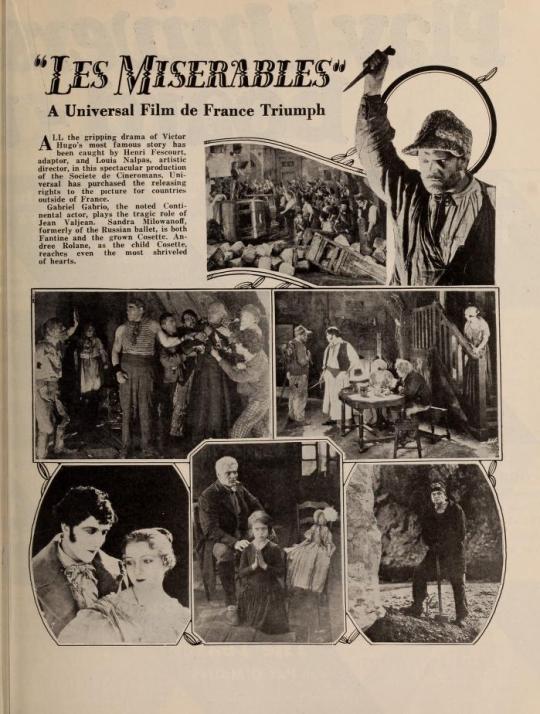

Souce: the Universal Weekly, 8 May 1926
London Showing Gala Event of Film Season
The London showing was in the London Hippodrome, April 9th, and was by far the gala event of the current film season in London. The picture is in twenty-two reels and was shown at a double session, each session including eleven reels. This was a decided novelty for the British filmmen and reviewers, yet was accepted with favor and even enthusiasm. It is considered likely that the American presentation of the big French film will conform to this method.
The trade showing tour of the picture which followed the London showing was as follows: West End Cinema, Birmingham, April 11th; Theatre Royal, Manchester, April 12th; Grainger Picture House, Newcastle, April 13th; Theatre Royal, Glasgow, April 14th; Briggate Picture House, Leeds, April 15th; Trocadero, Liverpool, April 16th, and Park Cinema, Cardiff, April 17th.
The London Hippodrome showing was marked by unusual ceremonies and celebrations. An elaborate prologue, hailed as one of the finest ever seen in England, preceded the picture. In it many of the principal actors and actresses of the film appeared in person. Included in the prologue were the following French film favorites, who made a special trip from Paris for the opening: Sandra Milowanoff, who plays Fantine; Andree Rolane, who plays Cosette; Jean Toulout, who plays Javert; Paul Jorge, who plays Mgr. Myriel; G. Saillard, who plays Thenardier; N. Saillard, who plays Eponine and Renee Carl who has the role of La Thenardier. In the prologue, these players broke through the pages of a big book and marched across the stage before the sleeping figure of Victor Hugo.
Prominent International Figures Attend
A number of the officials and executives of the Societe des Cineromans also were present from Paris, including Jean Sapene, proprietor of Le Matin and director general of the Societe; Louis Nalpas, art director of the Societe; Henri Fescourt, who produced "Les Miserables," and others of similar importance. Amie de Fleureau [sic], French Ambassador to England, was present at the showing, with other prominent Frenchmen now in England, including Marcel Knecht.
The French Ambassador, the officials of the Cineromans, members of the cast and many prominent Britons were guests at a banquet held the same evening in the Hotel Metropole, London. Ambassador de Fleureau, Sapene, Nalpas and Knecht sent the following cable to Carl Laemmle during the dinner:
"After the splendid and unequalled presentation of 'Les Miserables' at the Hippodrome today to enthusiastic elite of England in the presence of the Ambassadors from Japan, Belgium, Brazil; the Ministers from Greece, Portugal, Norway, Finland and Lithuania; after this most cordial banquet uniting two hundred British-American-French leading journalists, we wish to congratulate warmly and to thank Universal and yourself for most efficient demonstration of Franco-American friendship for the betterment of peace."
The cable also contained high praise for James V. Bryson, general manager of the European Motion Picture Co., Ltd., Universal's distributors in the British Isles. Bryson and his aids have had most to do with the acquisition of "Les Miserables" by Universal and for the elaborate presentation it has just received overseas. Cables of gratitude and praise also were sent to Laemmle from the Mayor of Nancy, France, the home of Hugo's father, and from the Mayor of Besancon, where Hugo was born.
Score and Story of Picture Broadcast
In connection with the Hippodrome presentation, the British National Opera Orchestra of fifty pieces was used to supply the musical background of the picture.
The entire score, together with the story of the picture, was broadcast by radio. It has been estimated that four million radio fans listened-in on this music program. Following the London presentation the orchestra was used for the various provincial trade showings. [. . .]
Other Cities Equally Enthusiastic
[. . .] Definite information as to whether "Les Miserables" would be released in America the same way as in England — in two parts of eleven reels each, totaling a four-hour show — could not be obtained this week at the Universal Home Office where it was said that this method was under serious consideration, but that no decision had yet been made.
It was pointed out that several other methods of presenting the entire twenty-two reels offer themselves. One of these would be to run the first eleven reels in the afternoon and the second part in the evening. Another way would be to run one part in one theatre and the other in another theatre day and date. Still a third way would be to run the first part the first half of the week and the second part the last half.
One thing is practically certain. Carl Laemmle, rather than sacrifice any of the dramatic thrills and entertainment value to be found in the full-length version, means to present it as it stands. It is of interest that the second half is almost a complete story in itself and with a short foreword for the purpose of introducing the characters and outline the elements of the preceding action, might conceivably stand on its own feet.
It is understood that Laemmle is seeking the advice of many exhibitors, newspaper reviewers and others on the perplexing subject of how to release "Les Miserables." Meanwhile, Universal is going ahead with plans to launch the big Universal-Film de France with an advertising, publicity and exploitation campaign that will dwarf that done for such previous Universal super-pictures as "The Hunch- back" and "The Phantom."
7 notes
·
View notes
Text



Les Miserables 1925 (Part 2) - Little Cosette (top) and Valjean (Gabriel Gabrio) bargains with the Thenardier's (Georges Saillard & Renee Carl) over Cosette (Andrée Rolane)
#les mis#les miserables#les miserables 1925 part 2#little cosette#valjean bargains with the thenardiers#jean valjean#gabriel gabrio#monsieur thenardier#madame thenardier#georges saillard#renee carl#andree rolane#silent movies#les mis silent movie
8 notes
·
View notes
Photo


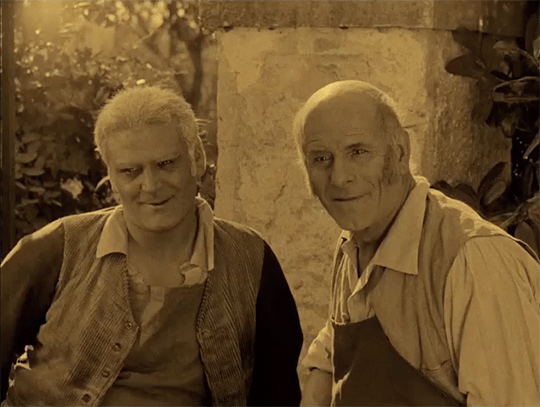

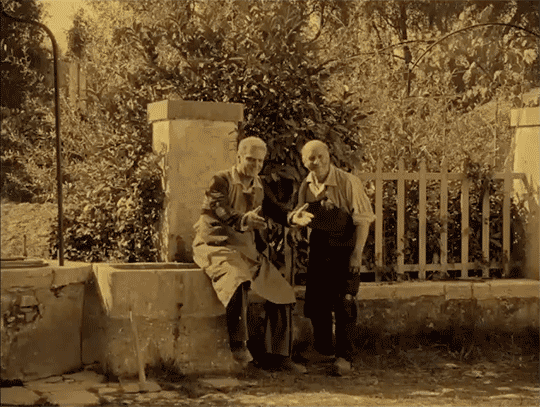
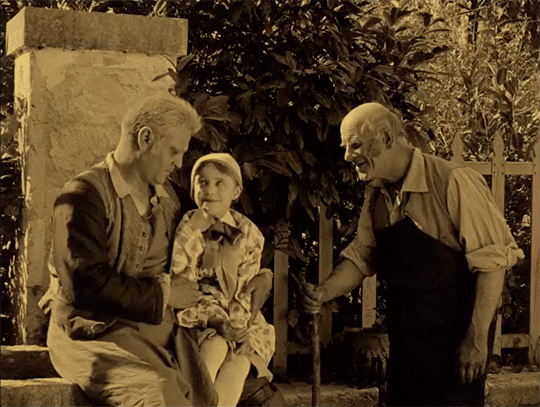

LES MIS LETTERS IN ADAPTATION - Cloistered, LM 2.8.9 (Les Miserables 1925)
Cosette had permission to pass an hour with him every day. As the sisters were melancholy and he was kind, the child made comparisons and adored him. At the appointed hour she flew to the hut. When she entered the lowly cabin, she filled it with paradise. Jean Valjean blossomed out and felt his happiness increase with the happiness which he afforded Cosette. The joy which we inspire has this charming property, that, far from growing meagre, like all reflections, it returns to us more radiant than ever. At recreation hours, Jean Valjean watched her running and playing in the distance, and he distinguished her laugh from that of the rest.
For Cosette laughed now.
Cosette’s face had even undergone a change, to a certain extent. The gloom had disappeared from it. A smile is the same as sunshine; it banishes winter from the human countenance.
#Les Mis#Les Miserables#Les Mis Letters#Les Miserables 1925#Les Mis 1925#LM 2.8.9#Cosette#Valjean#Fauchelevent#Cosette Fauchelevent#Jean Valjean#lesmisedit#lesmiserablesedit#lesmiserables1925edit#pureanonedits#silentfilmedit#filmedit#Gabriel Gabrio#Andree Rolane#This is probably the last time I shall gif her for this project :/#she's so good!!#The best little Cosette ever
51 notes
·
View notes
Photo


LES MIS LETTERS IN ADAPTATION - The Zigzags of Strategy, LM 2.5.1 (Les Miserables 1925)
The moon was full that night. Jean Valjean was not sorry for this. The moon, still very close to the horizon, cast great masses of light and shadow in the streets. Jean Valjean could glide along close to the houses on the dark side, and yet keep watch on the light side. He did not, perhaps, take sufficiently into consideration the fact that the dark side escaped him. Still, in the deserted lanes which lie near the Rue Poliveau, he thought he felt certain that no one was following him.
Cosette walked on without asking any questions. The sufferings of the first six years of her life had instilled something passive into her nature. Moreover,—and this is a remark to which we shall frequently have occasion to recur,—she had grown used, without being herself aware of it, to the peculiarities of this good man and to the freaks of destiny. And then she was with him, and she felt safe.
#Les Mis#Les Mis Letters#Les Miserables#Les Miserables 1925#Les Mis 1925#Les Mis Letters in Adaptation#Jean Valjean#Cosette#Valjean#Cosette Fauchelevent#Gabriel gabrio#Andree Rolane#lesmisedit#lesmiserablesedit#LM 2.5.1#lesmiserables1925edit#silentfilmedit#filmedit#silent film#pureanonedits
35 notes
·
View notes
Photo









LES MIS LETTERS IN ADAPTATION - The Beginning of an Enigma, LM 2.5.6 (Les Miserables 1925)
All at once, in the midst of this profound calm, a fresh sound arose; a sound as celestial, divine, ineffable, ravishing, as the other had been horrible. It was a hymn which issued from the gloom, a dazzling burst of prayer and harmony in the obscure and alarming silence of the night; women’s voices, but voices composed at one and the same time of the pure accents of virgins and the innocent accents of children,—voices which are not of the earth, and which resemble those that the newborn infant still hears, and which the dying man hears already. This song proceeded from the gloomy edifice which towered above the garden. At the moment when the hubbub of demons retreated, one would have said that a choir of angels was approaching through the gloom.
Cosette and Jean Valjean fell on their knees.
They knew not what it was, they knew not where they were; but both of them, the man and the child, the penitent and the innocent, felt that they must kneel.
#Les Mis#Les Miserables#Les Mis Letters#les mis Letters in Adaptation#LM 2.5.6#Jean valjean#Valjean#Cosette#Cosette Fauchelevent#Les Mis 1925#Les Miserables 1925#Gabriel Gabrio#Andree Rolane#lesmisedit#lesmiserablesedit#lesmiserables1925edit#silent film#silentfilmedit#pureanonedits
43 notes
·
View notes
Photo
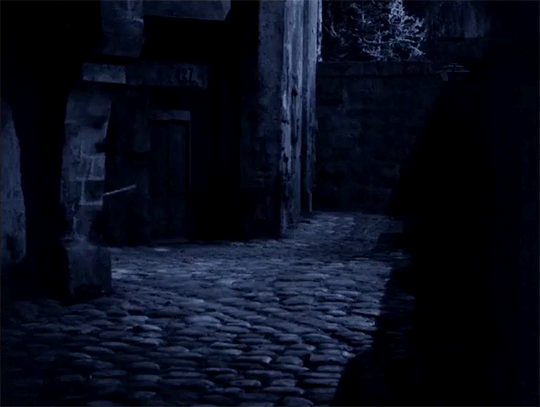
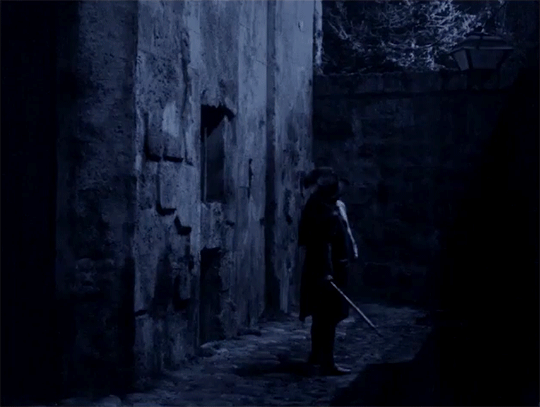
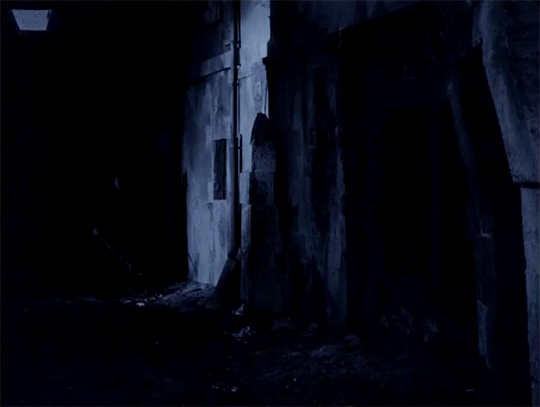
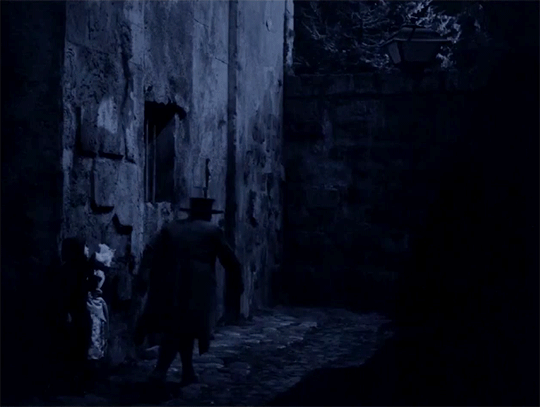

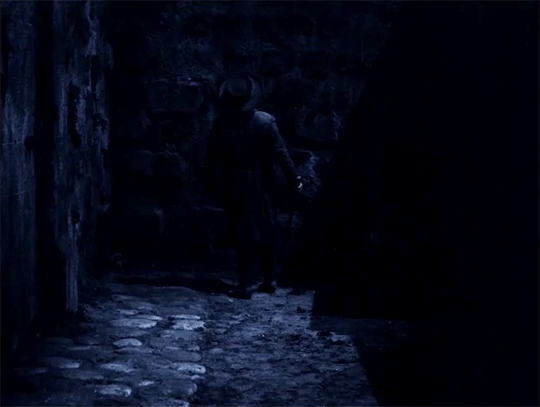
LES MIS LETTERS IN ADAPTATION - To Wit, the Plan of Paris in 1727, LM 2.5.3 (Les Miserables 1925)
The time for retreating was passed. That which he had perceived in movement an instant before, in the distant darkness, was Javert and his squad without a doubt. Javert was probably already at the commencement of the street at whose end Jean Valjean stood. Javert, to all appearances, was acquainted with this little labyrinth, and had taken his precautions by sending one of his men to guard the exit. These surmises, which so closely resembled proofs, whirled suddenly, like a handful of dust caught up by an unexpected gust of wind, through Jean Valjean’s mournful brain. He examined the Cul-de-Sac Genrot; there he was cut off. He examined the Rue Petit-Picpus; there stood a sentinel. He saw that black form standing out in relief against the white pavement, illuminated by the moon; to advance was to fall into this man’s hands; to retreat was to fling himself into Javert’s arms. Jean Valjean felt himself caught, as in a net, which was slowly contracting; he gazed heavenward in despair.
#Les Mis#Les Mis Letters#Les Miserables#Les Miserables 1925#Les Mis Letters in Adaptation#Les Mis 1925#silent film#filmedit#silentfilmedit#lesmiserablesedit#lesmisedit#lesmiserables1925edit#pureanonedits#Valjean#Javert#Cosette#Cosette Fauchelevent#Jean Valjean#Gabriel Gabrio#Andree Rolane#Jean Toulout#LM 2.5.3
38 notes
·
View notes